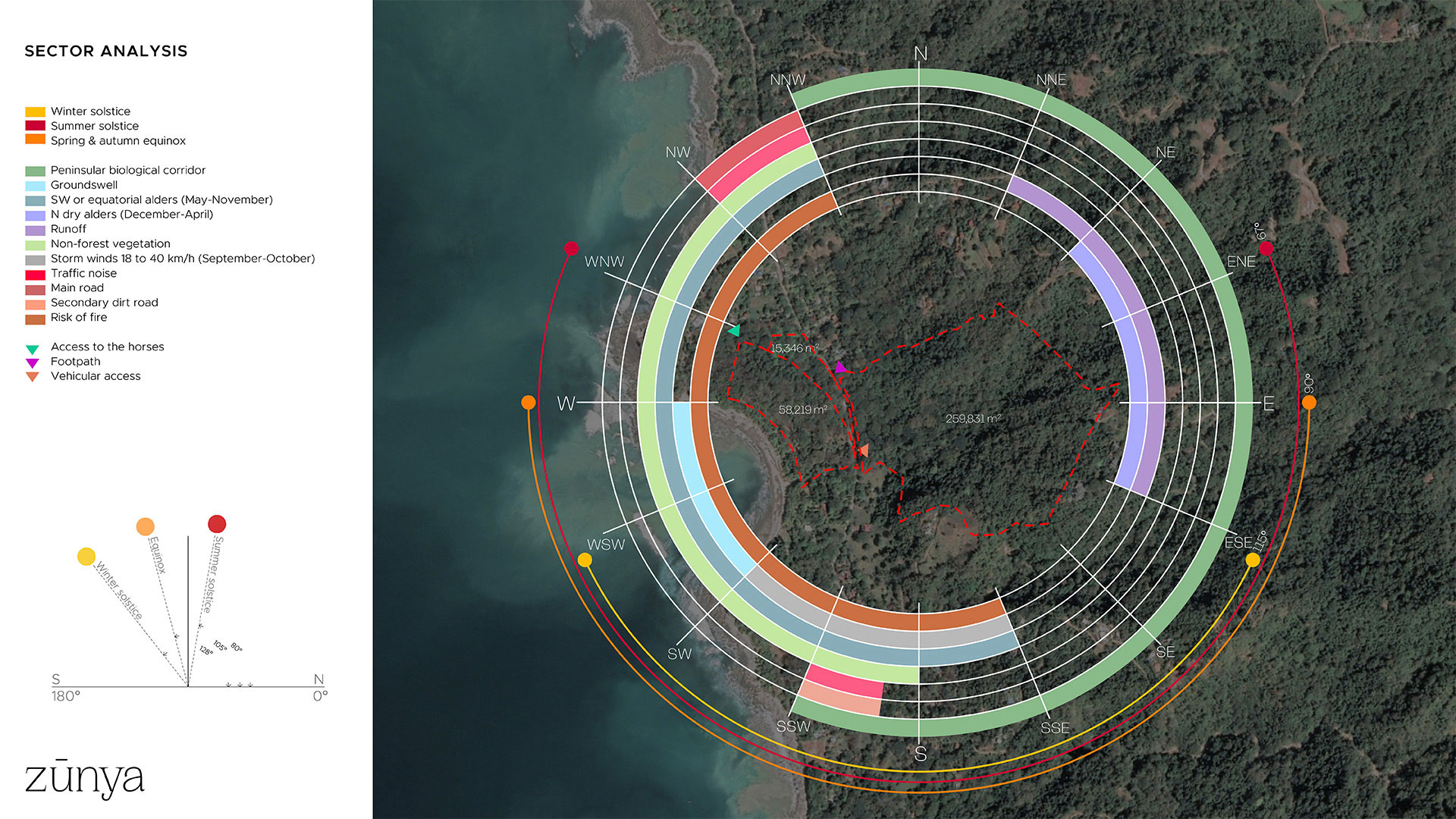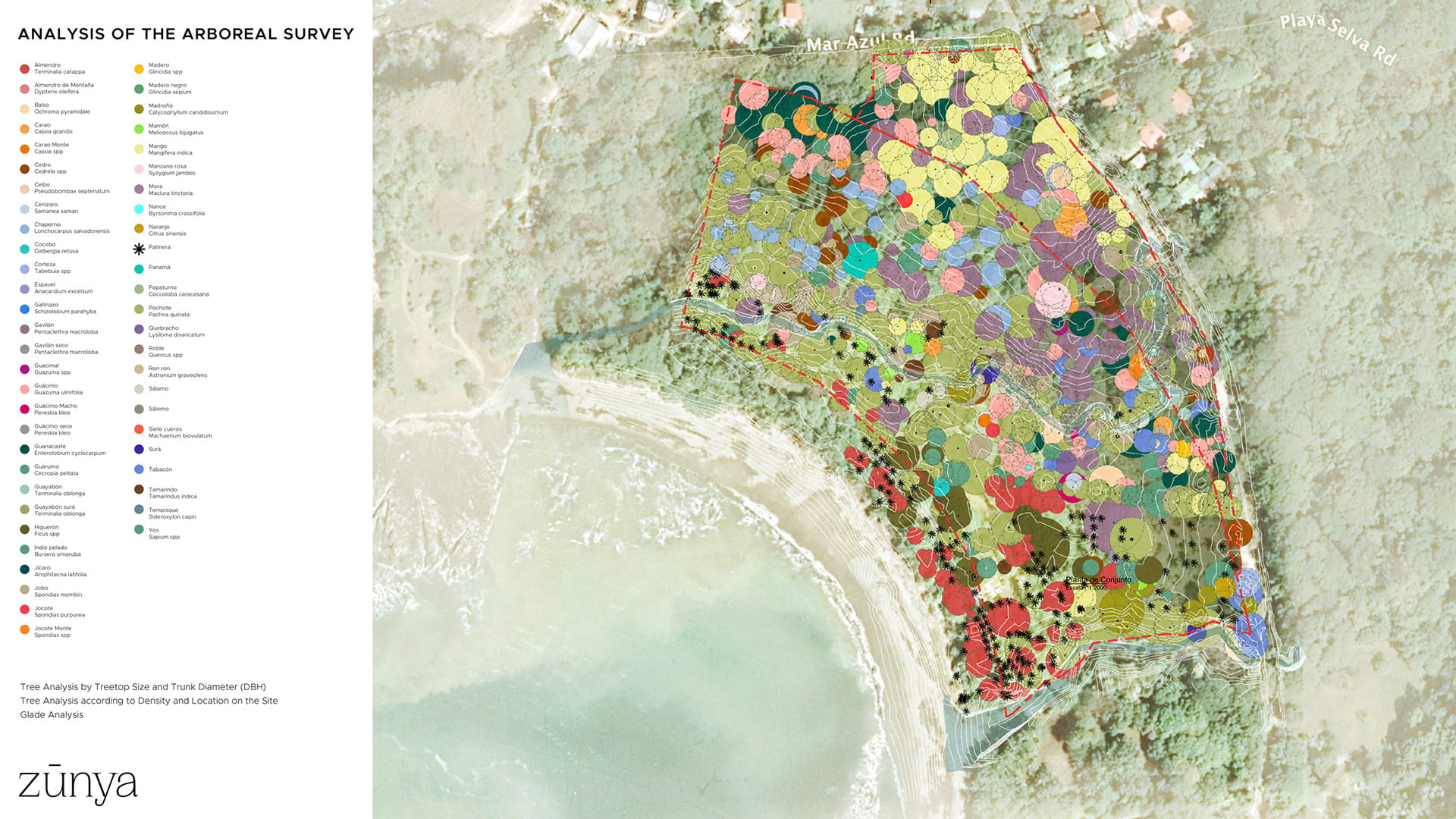It has been confirmed that managing natural resources generates new jobs and economic benefits, and an incentive for their conservation and a cultural identity arises, which is expressed through the traditional use of those resources by the communities.
A Site Analysis is a tool for understanding the vocation of a specific territory. It helps to define its potential use and provides information that may be a valuable source of inspiration for planning and designing.
The main purpose of this Site Analysis consists of generating inputs for the development of a Master Plan adapted to the conditions of the location ecosystem and establishing productive systems based on the use of local resources.
The information presented here seeks to support decision-making during the development of the project, in order for the needs that arise to respond to the natural context, guaranteeing high performance and resilience in the long term.
Zunya was born from a desire to help people reconnect with themselves, others, and nature in the simplest terms. Because of this, the natural area we decided to build upon had to represent this deep necessity to go back to our roots, while, at the same time, respecting the territory we were adapting as our own. As such, these main objectives came to be:
• Emphasize the natural beauty of this place, without having a negative effect on the ecosystem.
• Provide a comprehensive and nurturing experience to the inhabitants, strengthening in turn
the natural and cultural heritage of the area
• Incorporate to the design the necessary flexibility to adjust to the natural surroundings,
without sacrificing construction efficiency, or production costs.
• Lay the foundations for a comprehensive design model for future projects.
In order to achieve the four main objectives listed above, we needed to carefully follow a process that would allow us to interact with the land in the most respectful and careful manner. The methodology we chose consisted of three stages:
• Analysis
• Design
• Assessment
The analysis studies the general conditions of the ecosystem, as well as the specific characteristics of the site where the project will be implemented.
The design uses the information generated in the analysis to ensure that the project maintains a close relation with the territory and meets the goals to protect the fragile nature of the site.
The purpose of the assessment is to measure the energy and climate performance of the project to minimize its impact on the natural context.



